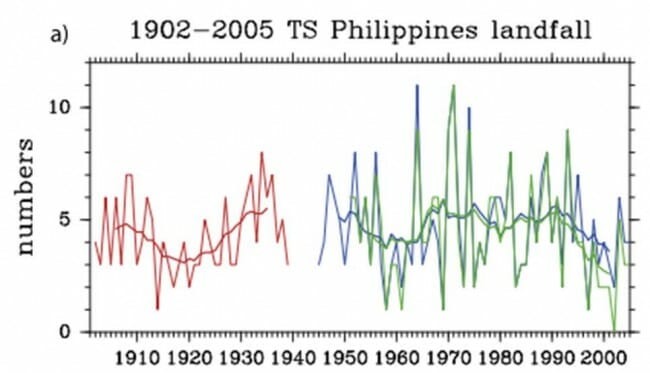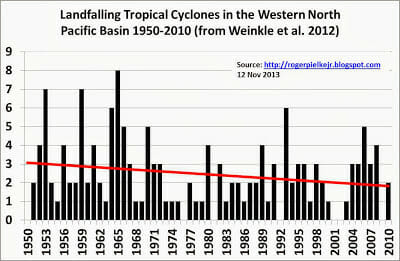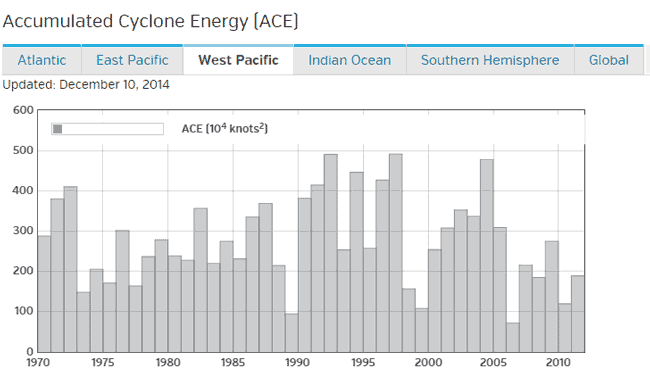Trend That is Not A Trend: Increase in Typhoons and Hurricanes
The science that CO2 is a greenhouse gas and causes some warming is hard to dispute. The science that Earth is dominated by net positive feedbacks that increase modest greenhouse gas warming to catastrophic levels is very debatable. The science that man's CO2 is already causing an increase in violent and severe weather is virtually non-existent.
Seriously, of all the different pieces of the climate debate, the one that is almost always based on pure crap are the frequent media statements linking manmade CO2 to some severe weather event.
For example, Coral Davenport in the New York Times wrote the other day:
As the torrential rains of Typhoon Hagupit flood thePhilippines, driving millions of people from their homes, the Philippine government arrived at a United Nationsclimate change summit meeting on Monday to push hard for a new international deal requiring all nations, including developing countries, to cut their use of fossil fuels.
It is a conscious pivot for the Philippines, one of Asia’s fastest-growing economies. But scientists say the nation is also among the most vulnerable to the impacts of climate change, and the Philippine government says it is suffering too many human and economic losses from the burning of fossil fuels....
A series of scientific reports have linked the burning of fossil fuels with rising sea levels and more powerful typhoons, like those that have battered the island nation.
It is telling that Ms. Davenport did not bother to link or name any of these scientific reports. Even the IPCC, which many skeptics believe to be exaggerating manmade climate change dangers, refused in its last report to link any current severe weather events with manmade CO2.
Roger Pielke responded today with charts from two different recent studies on typhoon activity in the Phillipines. Spot the supposed upward manmade trend. Or not:
I am not a huge fan of landfalling cyclonic storm counts because whether they make landfall or not can be totally random and potentially disguise trends. A better metric is the total energy of cyclonic storms, land-falling or not, where again there is no trend.
Via the Weather Underground, here is Accumulated Cyclonic Energy for the Western Pacific (lower numbers represent fewer cyclonic storms with less total strength):
And here, by the way, is the ACE for the whole globe:
Remember this when you see the next storm inevitably blamed on manmade global warming. If anything, we are actually in a fairly unprecedented (in the last century and a half) hurricane drought.



